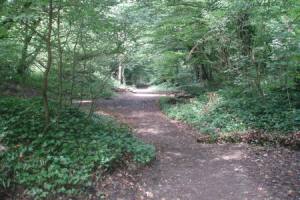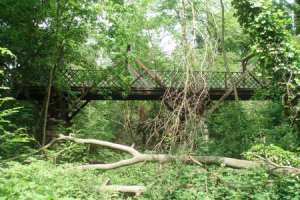Tags
 Autumn is a perfect time to explore this lovely piece of woodland and a visit here is a lovely escape from the city. It is arguably the closest pieces of ancient British woodland to the centre of London and for this reason, along with its natural beauty, should be considered for an outing.
Autumn is a perfect time to explore this lovely piece of woodland and a visit here is a lovely escape from the city. It is arguably the closest pieces of ancient British woodland to the centre of London and for this reason, along with its natural beauty, should be considered for an outing.
In the 13th Century the Great North Wood (located to the south east of London) was over 800 acres and aside from being a food source, it became a vital supplier of timber for the Royal Dockyards at Deptford. Over the years the woods were reduced in size through development. While the accessible portion is about 23 acres in size, the Sydenham Hill Wood is adjoined by the Dulwich Wood - which doubles the remnant’s size. While Dulwich Wood is privately owned by the Dulwich Estate it is generally open (though can be locked). Sydenham Hill Wood is always open.
There are over 200 species of trees and wild plants, along with plenty of wildlife. Some areas are traditional ancient English woodland - mostly comprising Oak and Hornbeam trees. Other areas have newer varieties present that have seeded over the years from the nearby Victorian estates - including a Cedar of Lebanon and a Monkey Puzzle tree. A few Victorian architectural relics can also be found in the wood left over from the estates that were developed here in the 19th Century. The relocation of the Crystal Palace in 1854 caused the Dulwich Estate to seek new sources of revenue - which it did through land development. In addition, a rail line was built through the woods to connect passengers to the new location of the Crystal Palace, but after the Palace burned down in the 1930s, the demand for the rail service declined and was ultimately abandoned and closed in 1954. The remains of the Nunhead-to-Crystal Palace rail line are still here in the form of a raised walking track, raised bridge and a tunnel (that is now home to the woolly long-eared bat - one of five species of bat that live in the wood). The footbridge at the north end of the park is the ‘Cox’s Lane’ bridge from which Camille Pisarro painted his famous painting - “Lordship Lane Station, Dulwich” - which hangs in the Courtauld Institute of art. This is the same railway track that is used for the walking trail at the nearby Horniman Museum.
was ultimately abandoned and closed in 1954. The remains of the Nunhead-to-Crystal Palace rail line are still here in the form of a raised walking track, raised bridge and a tunnel (that is now home to the woolly long-eared bat - one of five species of bat that live in the wood). The footbridge at the north end of the park is the ‘Cox’s Lane’ bridge from which Camille Pisarro painted his famous painting - “Lordship Lane Station, Dulwich” - which hangs in the Courtauld Institute of art. This is the same railway track that is used for the walking trail at the nearby Horniman Museum.
The ponds in these woods are fed by the ‘Ambrook’, which is a mostly underground stream and lost tributary to the mythic Effra River that once flowed to the Thames. As a side note there are plans afoot to find the source of the Ambrook and restore it to an above ground stream / waterway if possible.
Adjacent to the wood is a golf course which at one stage was farmland. In 1732 Francis Cox, the publican of the nearby Green Man Public House built ‘Cox’s Walk’ - a wonderful oak-tree lined walkway - to facilitate easier access to his business for people from Sydenham Wells. The walk is the entry to the woods when accessing from the north at the corner of Dulwich Common road and Lordship Lane - it is from here that you can walk the bridge Pisarro painted from.
 The wood is managed by the London Wildlife Trust and have been designated as a local nature reserve since 1982. On their website they have four seasonal walking trail maps. If you are going to visit I recommend you print out the map for the correct season - it will make your visit more enjoyable:
The wood is managed by the London Wildlife Trust and have been designated as a local nature reserve since 1982. On their website they have four seasonal walking trail maps. If you are going to visit I recommend you print out the map for the correct season - it will make your visit more enjoyable:
Location & Closest Rail: Sydenham Hill Rail (Southeastern from Victoria) for Crescent Wood Road entrance - south end or Forest Hill Rail (Overground line from Highbury/Islington or Southern Rail from London Bridge) for Cox’s Walk entrance - north end.
Bridge & Trail Photos courtesy of John Saville.
